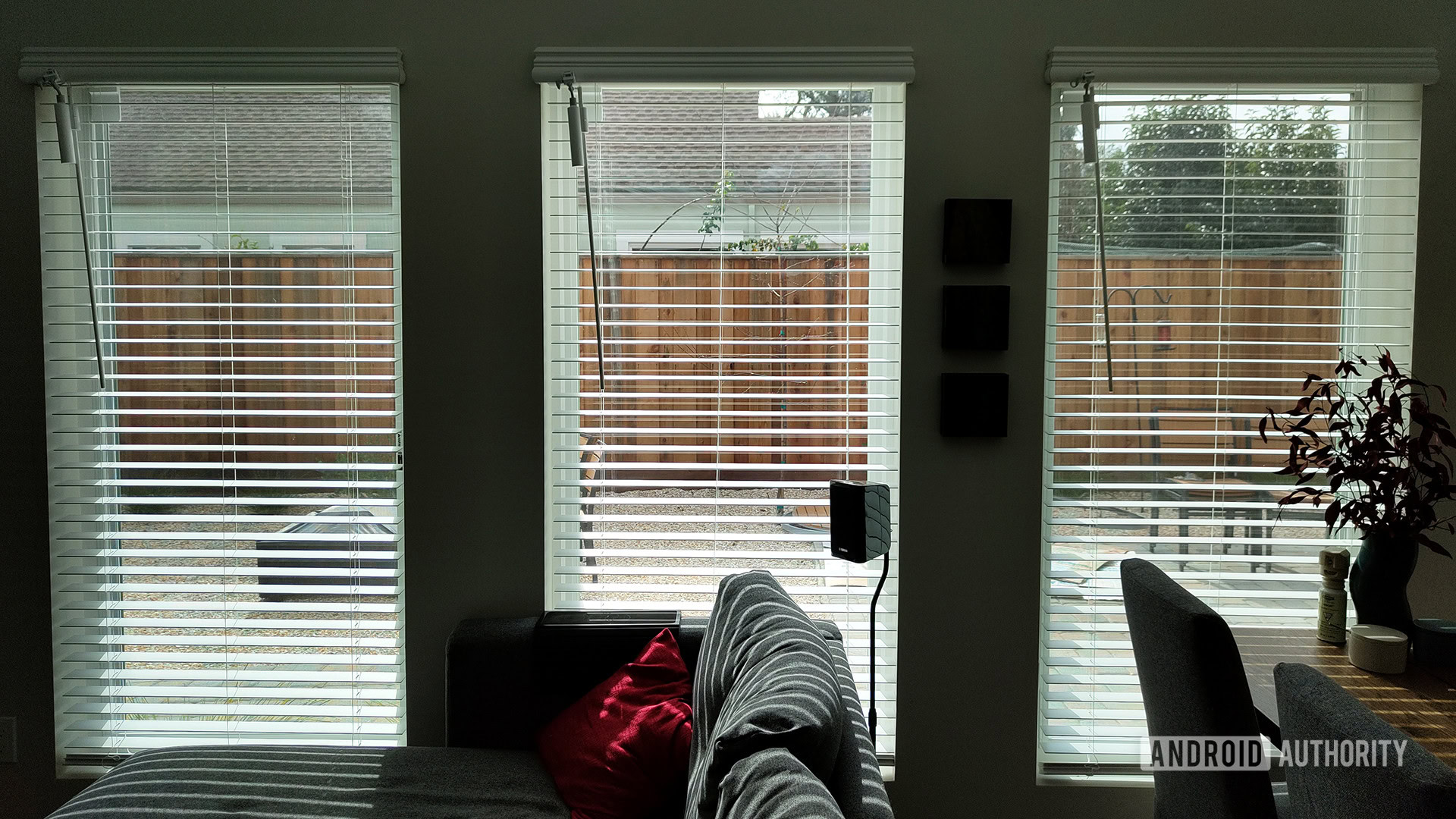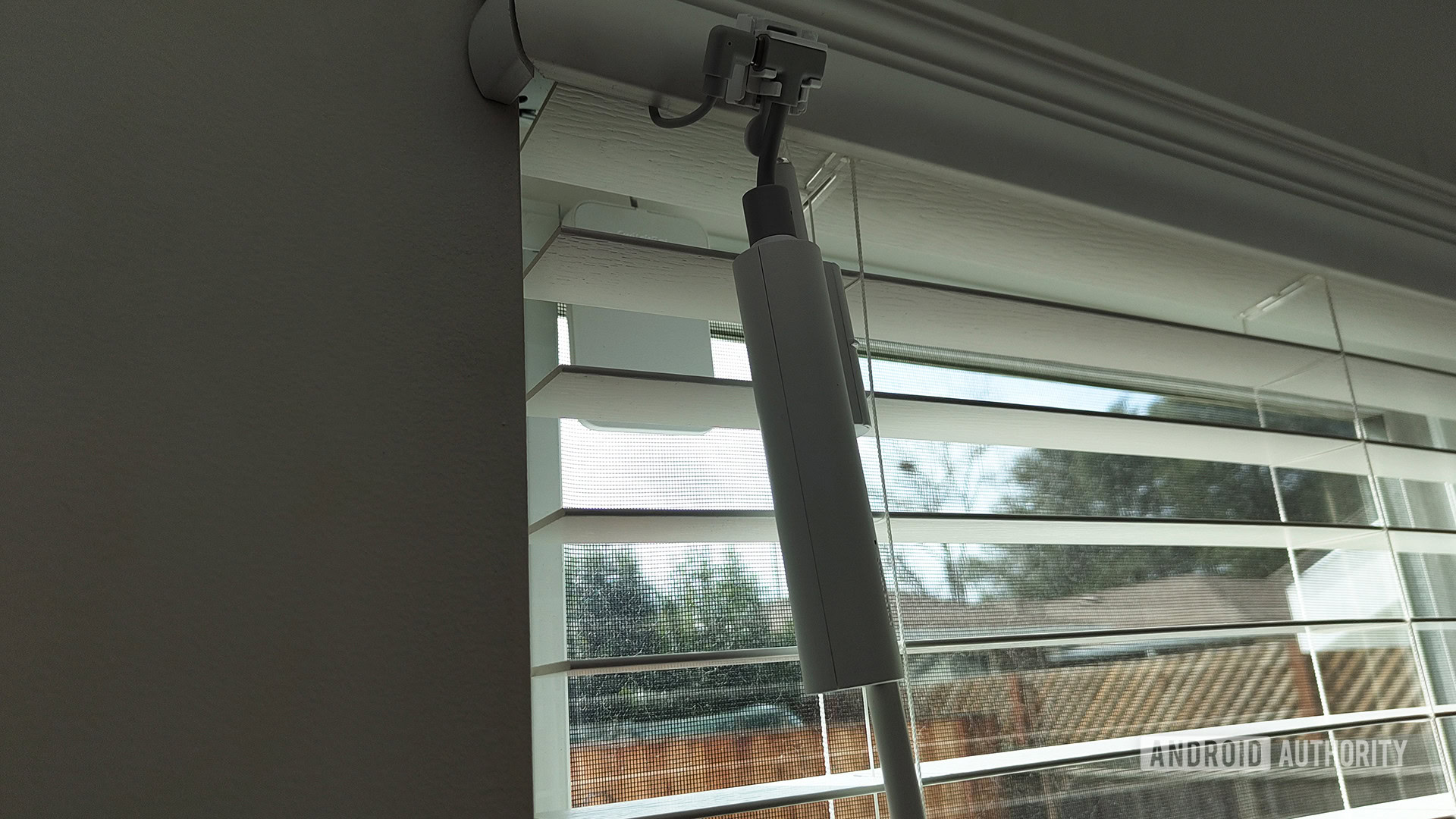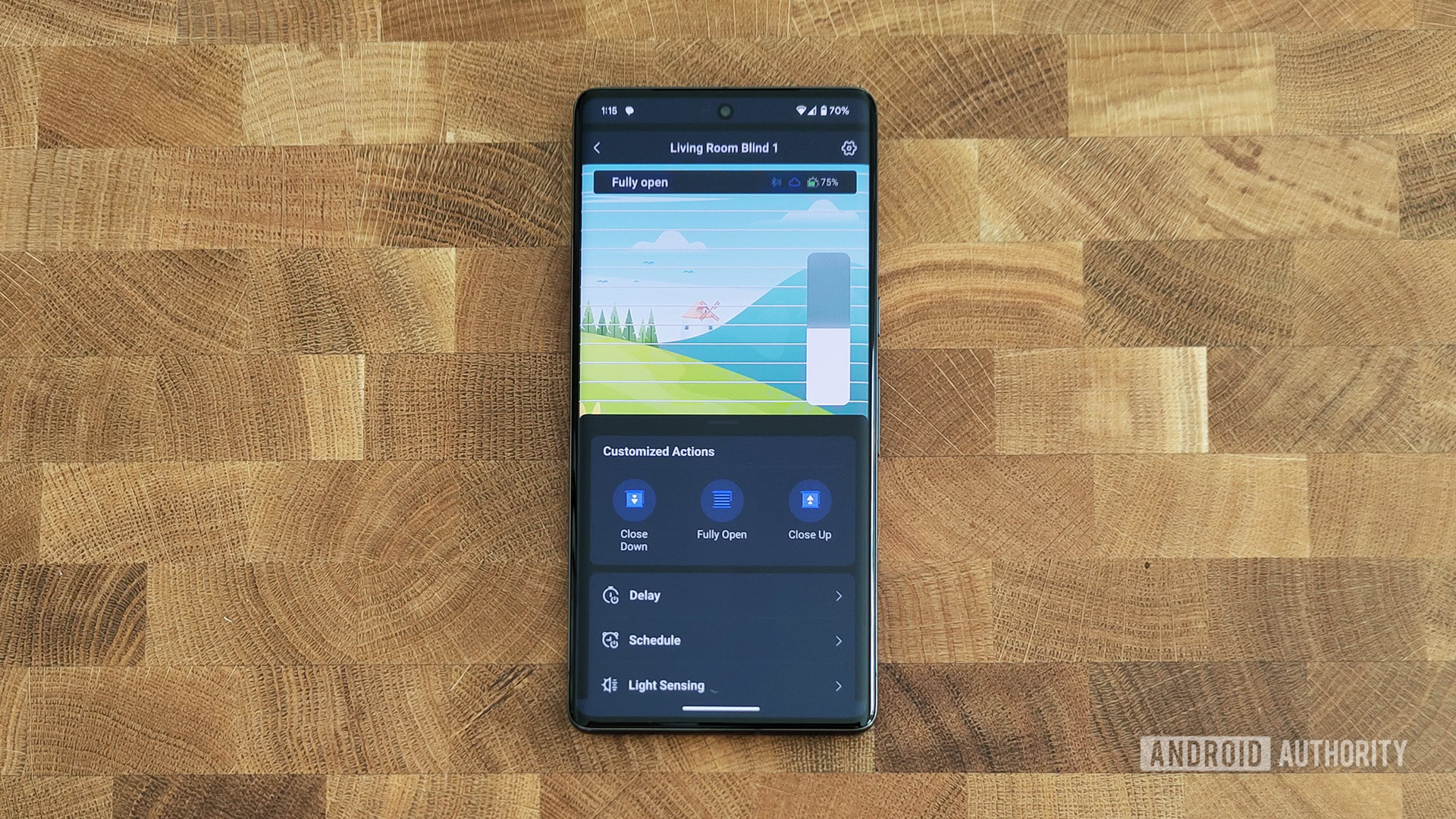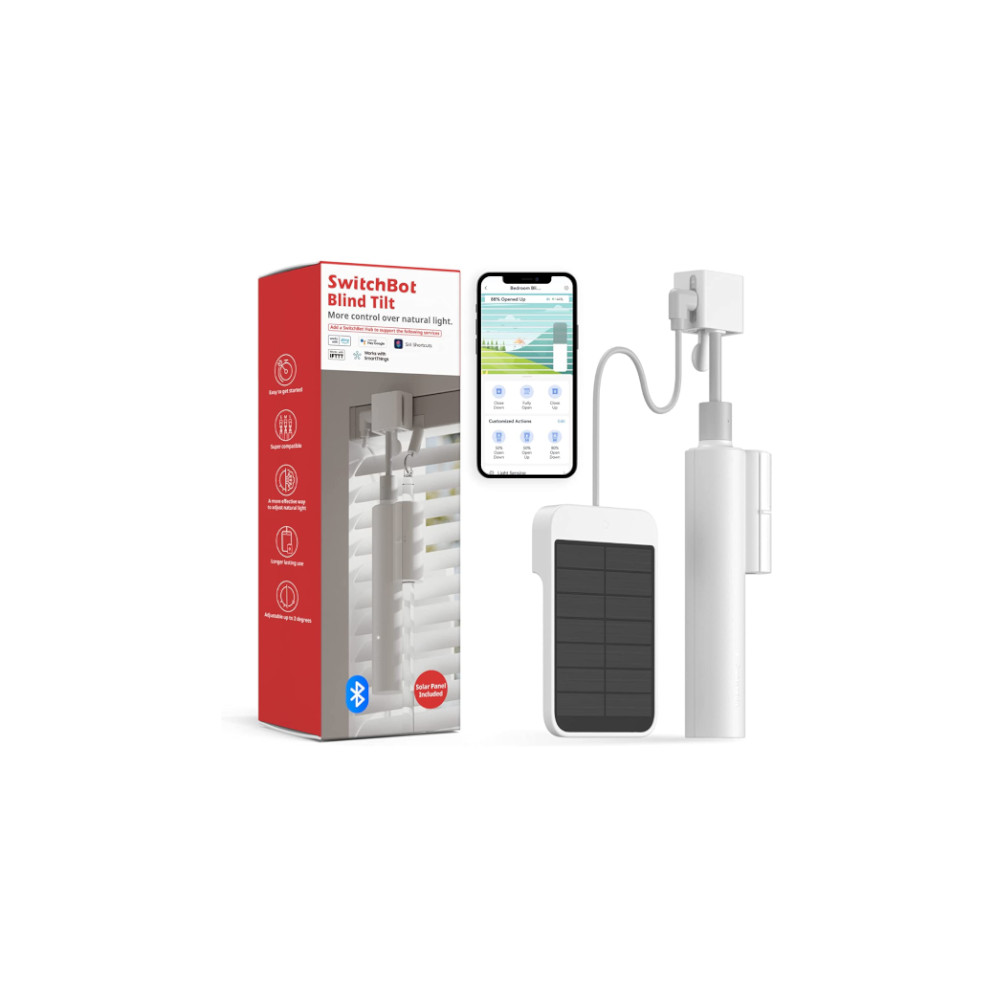Affiliate links on Android Authority may earn us a commission. Learn more.
I retrofitted my blinds to make them smart, and it's been awesome
Published onMarch 5, 2023

I recently retrofitted my rented house with a few smart home products from SwitchBot. It’s been revolutionary using SwitchBot’s various tools, including its mechanized button-pushing SwitchBot Bot, infrared blasts from the Hub Mini, temperature control through the Meter Plus, and saving floor space with the LED Strip Light. However, at the time, I could not test out the newest product in the company’s smart home portfolio: the SwitchBot Blind Tilt.
This new device snaps onto your pre-existing “dumb” blinds and makes them smart by allowing you to control the tilt of the panels remotely, which is ideal if you can’t install or don’t want the expense of smart blinds. SwitchBot was kind enough to send me a set of Blind Tilts to try out.
SwitchBot Blind Tilt: How does it work?

Installing the Blind Tilt is a bit overwhelming. The box contains over a dozen components, so it looks like putting it all together will take hours at first glance. However, most of the parts are there to help with compatibility across various types of blinds, so you don’t end up using them all.
Essentially, there are two aspects of the Blind Tilt. The first is the tilting mechanism, a tube-shaped mechanical rotator. You snap this onto your blinds’ existing tilt wand. Gears inside grip the wand and rotate it in either direction. The second aspect of the full kit is a solar panel, which connects to the tilting mechanism via a USB-C connection to provide power.
Thanks to the solar panel, I doubt I'll ever have to charge the Blind Tilt manually.
The first set of blinds took me about 20 minutes to go from opening the box to having everything installed. However, once I knew what I needed and didn’t need from the box, subsequent blinds took less than five minutes. In under an hour, I had a Blind Tilt on every set of blinds in my house.
SwitchBot claims the Blind Tilt works with 99% of commercial blinds, but I couldn’t test this as all my blinds are the same. Now that I know how it works, though, I am inclined to believe that claim; all the Blind Tilt does is mimic a human hand by rotating the tilt wand. The only reason this wouldn’t work on a particular set of blinds is if the wand itself was too big or shaped incorrectly for the Blind Tilt.
The solar panel is a nice touch. It’s not big enough to fully charge the Blind Tilt from zero, but it provides enough trickle power to prevent you from needing to charge it manually. I installed the system with 75% battery, and two weeks later, I am still at 75%, despite using them multiple times a day every day. I would need more time to prove it, but I suspect I’ll never need to charge these manually. If, for whatever reason, you don’t want or can’t use the solar panels, charging the Blind Tilt is a big pain. You’ll either need a very long USB-C cable to reach the device as it’s installed or disassemble it to bring the device to a charger. Either way is far more complicated than the “set it and forget it” nature of solar panels.
Regardless, once you have everything installed, the fun begins.
Cool things I do with my new smart blinds

Using the SwitchBot app, you can remotely open and close your blinds from anywhere. You can group blinds and sync them up, too. So you could, for example, open all the blinds in the living room at once with just one button tap.
You can also automate opening/closing based on various factors. I have the blinds automatically close 15 minutes after sunset every evening and open an hour after sunrise every morning. During the warmer months, I will use the Light Sensing feature, which automatically moves the blinds depending on how much light is inside my home. This will be great for cutting air conditioning costs during the California summer.
SwitchBot offers a lot of automations and controls for Blind Tilts, and you can add them to your existing smart home platform.
SwitchBot also integrates with smart home platforms, including Google Home, Amazon Alexa, and more (you’ll need one SwitchBot Hub to control all your blinds, which is sold separately for $39). This allows me to issue voice commands in my home, such as “Hey Google, open the bedroom blinds.” I also created automations within the Google Home app. One I have is called “Let’s watch a movie,” which turns off all the lights in the house, turns on the TV, turns on my TV’s bias lighting, and closes all the blinds.
There’s also a SwitchBot Remote (sold separately for $19.99) that you can program to do pretty much anything with your SwitchBot products. I set it up so the top button opens all the blinds in the living room, and the bottom button closes them. This will enable guests who don’t know my voice commands to still control the blinds in the house’s main area. Of course, the Blind Tilt does not prevent manual operation, so guests could still go the Stone Age route and open each of the blinds by hand if they wanted.
Overall, I’ve been very happy with the SwitchBot Blind Tilt. I wish they were a little quieter, as they make a high-frequency whirring sound as they rotate the tilt wand. They also aren’t exactly cheap — each device costs $69.99. If you have more than four sets of blinds in your house, you will spend more than $300 to retrofit them all. Still, that’s far less than you’d spend installing any of the best smart blinds, which might not even be an option if you rent your home as I do.
While I readily admit that smart blinds aren’t an essential investment for smart homes, having them in my house has certainly been helpful, and I recommend them to anyone who might be on the fence! SwitchBot products are available throughout many parts of the world, including the US, Europe, Australia, and more.
